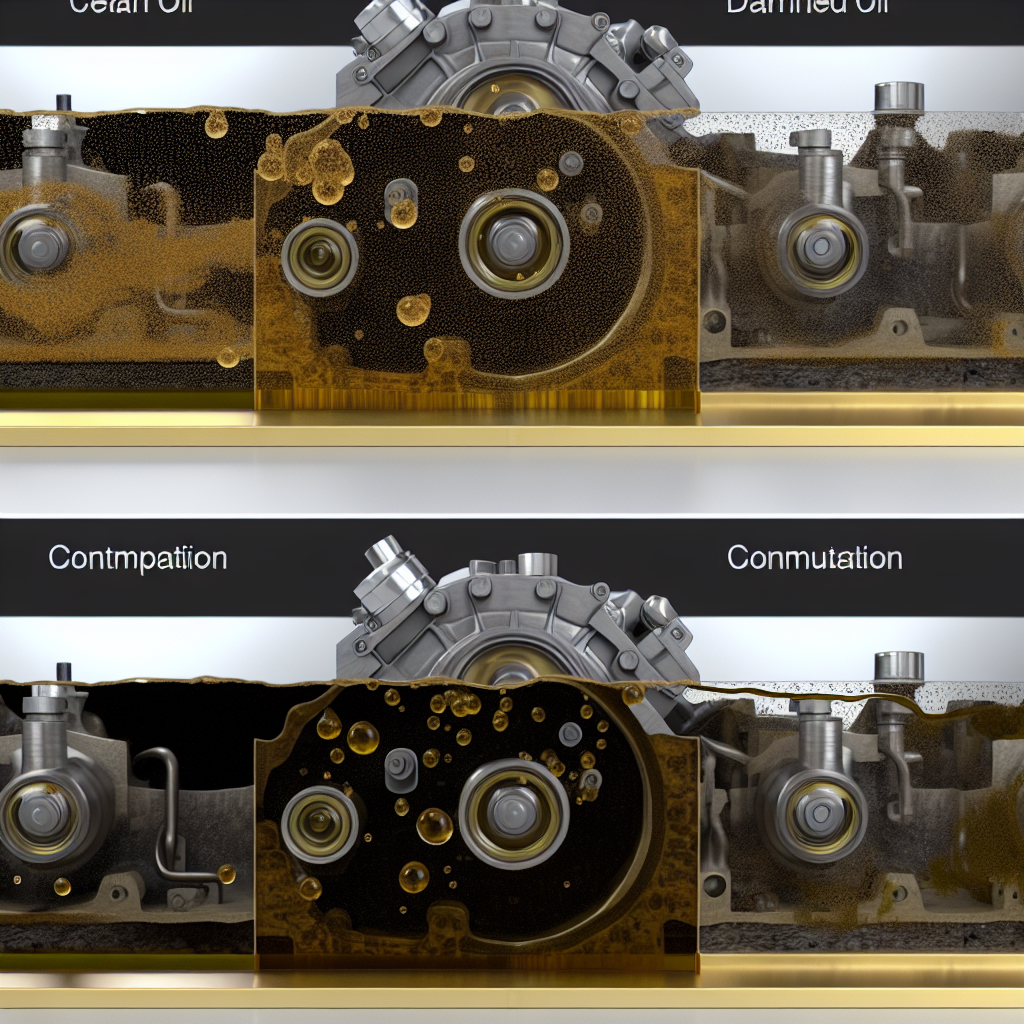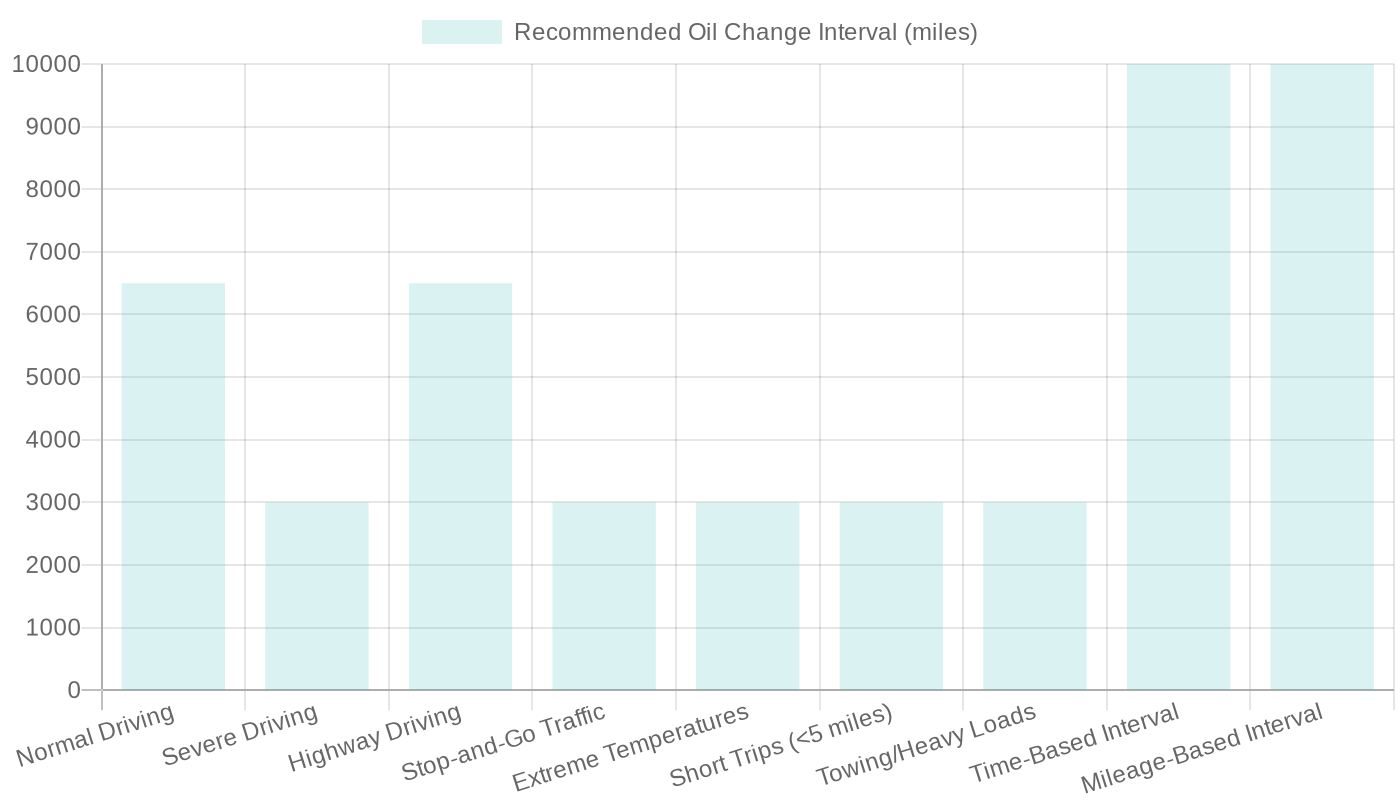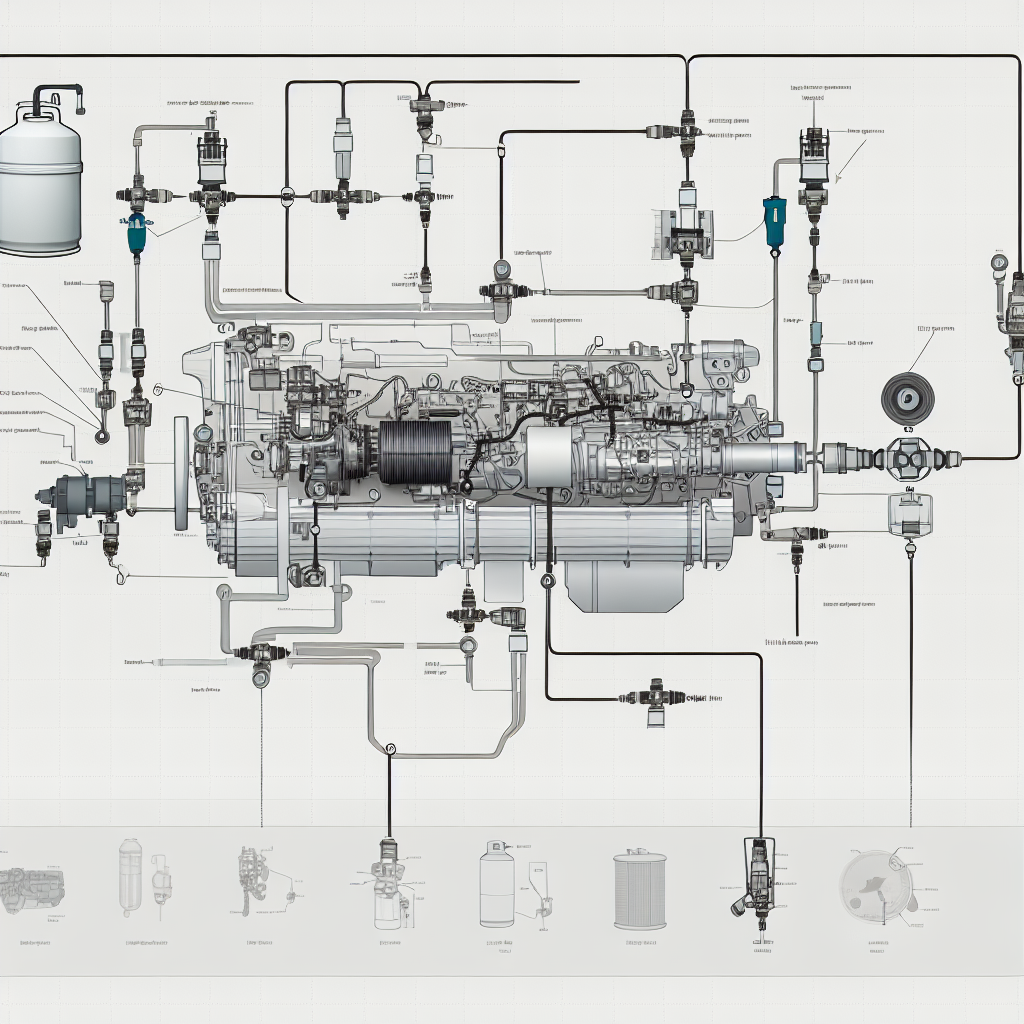Choosing the right oil change intervals is crucial for ensuring the longevity and performance of your vehicle. Have you ever wondered which is more critical: time or mileage? While many drivers may instinctively reach for the odometer, the reality is that both elements play a vital role in oil health. Did you know that oil can degrade even when your car is sitting idle? Studies show that modern oils can last between 5,000 to 10,000 miles, yet the common recommendation is to change your oil every 3,000 miles or three months. These figures emphasize the need to carefully consider both time-based and mileage-based intervals in your maintenance schedule. Ultimately, it is not simply a question of mileage versus time; it’s about understanding how both factors impact your engine’s health and efficiency.
Understanding Oil Degradation
Oil is an essential lifeblood of your vehicle, but what happens when it begins to deteriorate even if your car hasn’t hit specific mileage milestones? The degradation of engine oil is primarily influenced by two significant factors: oxidation and moisture, both of which can occur even without the engine being in regular use.
The Role of Oxidation
Oxidation is a chemical reaction where engine oil interacts with oxygen. This process can lead to the formation of acidic compounds and sludge, fundamentally altering the oil’s properties. Heat and pressure in the engine can accelerate oxidation, causing your oil to thicken and lose its lubricating effectiveness, which in turn increases engine friction and wear. Over time, these oxidized deposits can clog oil passages and result in costly engine problems. This is a reminder that oil can go bad just sitting in your engine, even if your vehicle is parked for weeks.
Moisture Contamination: A Hidden Threat
Moisture in engine oil is another degradation factor that should not be overlooked. Water can enter the oil system through various means, such as condensation or leaks. Once present, moisture can cause corrosion of engine components and significantly reduce the effectiveness of oil additives. It is crucial to note that just a 1% moisture content can increase wear rates by an alarming 2.5 times! Thus, monitoring moisture levels is a key aspect of oil maintenance.
Effects of Inactivity
Engines that remain inactive may still face oil degradation due to oxidation and moisture. Fluctuating temperatures can lead to condensation within the engine, causing moisture to form. Furthermore, simply having oil sit for an extended period can result in chemical changes that compromise its quality, thickening it and forming sludge that jeopardizes engine health.
In conclusion, understanding oil degradation is vital for any vehicle owner. Regular checks, timely oil changes, and awareness of oil condition can prevent serious engine issues. Remember, it is not just about how far you drive; it’s about how long that oil sits, too. Maintaining oil quality is essential for optimal vehicle performance and longevity.
Driver Adoption of Oil Change Intervals: Statistics and Implications
In today’s world, keeping up with vehicle maintenance is essential for safe and efficient driving. However, many drivers do not follow the recommended oil change intervals. A recent AAA survey found that 35% of drivers either delay or skip necessary maintenance, including oil changes. The Car Care Council reported that around 22% of vehicles are running with low or dirty engine oil, increasing the chances of engine failure.
The Consequences of Skipping Oil Changes
Neglecting regular oil changes can lead to serious problems, including:
- Engine Damage: Old oil can create sludge that clogs oil passages, reducing engine performance and causing damage over time.
- Reduced Fuel Efficiency: Degraded oil increases friction, forcing the engine to work harder and consume more fuel.
- Increased Repair Costs: Delaying oil changes often results in costly repairs from extensive damage. Regular oil changes can save money in the long run.
Importance of Oil Change Schedules
These statistics highlight the urgent need for drivers to rethink their maintenance habits. Following recommended oil change intervals is critical for the longevity and efficiency of vehicles. Regular oil changes protect investments and ensure that vehicles perform well for many miles ahead.
Comparison of Time vs Mileage Intervals for Oil Changes
When determining optimal oil change intervals, it’s essential to consider both time and mileage, as well as driving conditions and the type of oil used.
Time-Based vs. Mileage-Based Intervals:
- Time-Based Intervals:
- Oil degrades over time due to oxidation, moisture accumulation, and additive depletion, even if the vehicle isn’t driven frequently. Manufacturers often recommend changing the oil every six months to ensure engine protection.
- Mileage-Based Intervals:
- Driving subjects oil to thermal cycles and contaminants, leading to degradation. Traditional guidelines suggested oil changes every 3,000 miles, but advancements in oil and engine technology have extended this to 5,000 miles or more for many vehicles.
Impact of Driving Conditions:
Driving conditions significantly influence oil life:
- Severe Conditions:
- Frequent short trips, stop-and-go traffic, towing, or driving in extreme temperatures can accelerate oil degradation. In such cases, more frequent oil changes are advisable.
- Normal Conditions:
- Consistent highway driving at steady speeds allows oil to reach optimal operating temperatures, helping to burn off contaminants and extend oil life.
Modern Oil Longevity:
Advancements in synthetic oils have improved their longevity:
- Synthetic Oils:
- These oils resist breakdown better than conventional oils, often allowing for extended intervals between changes. Some high-quality synthetic oils can last up to 10,000 miles or more, depending on driving conditions and manufacturer recommendations.
- Best Maintenance Practices: For the best oil change practices, consider the following:
- Regularly check oil levels and quality.
- Change oil every 7,500 to 10,000 miles under normal conditions, and at 5,000 miles for severe driving conditions. [source]
- Make use of vehicle oil life monitoring systems for timely changes.
- Ensure oil changes are done minimally once a year, as synthetic oils can deteriorate even when not used frequently.
Comparison of Oil Change Recommendations
| Vehicle Model | Recommended Oil Change Interval | Notes |
|---|---|---|
| Chelsea Corvette Stingray | Every 7500 miles or 1 year | Can vary based on oil type used (synthetic preferred). |
| Honda Civic | Every 5000 miles or 6 months | Depends on driving conditions; more frequent for severe use. |
| Ford F-150 | Every 7500 miles or 6 months | Engine type and oil type impact recommendations. |
| Toyota Camry | Every 5000 miles or 6 months | Synthetic oil may extend intervals. |
| Subaru Outback | Every 6000 miles or 6 months | Check for oil type and manufacturer-specific recommendations. |
| BMW 3 Series | Every 10,000 miles or annually | Requires synthetic oil; follow specific oil grade guidelines. |
| Volkswagen Jetta | Every 5000 miles or 6 months | Oil type can influence maintenance schedule. |
Conclusion:
Both time and mileage are critical factors in determining oil change intervals. Modern oils offer extended longevity, but driving conditions and usage play a significant role in oil degradation. Regular maintenance, tailored to your driving habits and conditions, is crucial for ensuring optimal engine performance and longevity. Prioritizing the correct oil change intervals helps protect your investment and maintain your vehicle’s efficiency for years to come.

The Impact of Driving Conditions on Oil Change Intervals
Driving conditions play a crucial role in determining optimal oil change intervals and have a direct effect on engine wear and oil degradation. Different environments such as highway driving versus stop-and-go traffic yield varying impacts on oil life and the overall health of your engine.
Highway Driving
When driving consistently at highway speeds, your engine tends to operate at optimal temperatures. This steady-state condition allows the oil to effectively lubricate engine components, burn off moisture, and prevent the buildup of contaminants. As a result, oil maintains its protective properties for a longer duration, enabling longer intervals between oil changes. According to a report from autoservicesofaustin.com, highway driving conditions allow your oil to perform better and can often lead to adhering to manufacturer recommendations for oil change intervals.
Stop-and-Go Traffic
Conversely, stop-and-go traffic presents challenges that can accelerate oil degradation. Frequent short trips and prolonged engine idling prevent the vehicle from reaching optimal operating temperatures, which leads to moisture and fuel dilution of the oil. This environment can cause premature sludge formation and necessitate more frequent oil changes. A key point emphasized by howstuffworks.com is that such driving conditions expose the oil to contaminants faster, reducing its ability to protect the engine and increasing wear.
Research Insights
A study conducted on city buses clearly demonstrated the importance of adhering to recommended oil change intervals. Those that exceeded the interval by 15,000 kilometers experienced a dramatic 46% increase in additive depletion and alarming rises in iron content in the oil, indicating significant wear of engine components (pmc.ncbi.nlm.nih.gov). This data correlates with the understanding that prolonged intervals in adverse driving conditions can lead to extensive motor damage.
Recommendations
To ensure your engine’s longevity, consider the following recommendations based on your driving conditions:
- For Highway Driving: You can confidently stick to manufacturer-recommended intervals, as oil degradation is generally slower.
- For Stop-and-Go Traffic: Be proactive and reduce your oil change intervals by 20 to 30% to combat the accelerated degradation and protect your engine.
In summary, understanding the impact of driving conditions is essential for maintaining optimal oil quality. Regularly monitoring oil conditions and aligning maintenance with your specific driving habits will vastly improve engine performance and longevity.
Remember, it is not just about how far you drive; it’s about the conditions you drive in.
Conclusion
In summary, adhering to oil change intervals based on both time and mileage is crucial for the long-term health of your vehicle. Engine oil can degrade due to oxidation and moisture, even when the vehicle is inactive, which means it is not enough to rely solely on mileage markers. Regular oil changes are essential to prevent oil quality from deteriorating, particularly in vehicles subjected to adverse driving conditions such as stop-and-go traffic or severe temperatures.
Statistics reveal that a significant portion of drivers neglect these important maintenance schedules, which can result in severe engine damage, reduced fuel efficiency, and expensive repair costs. By understanding the factors that affect oil degradation and committing to proactive maintenance, drivers can significantly extend the lifespan of their vehicles. Ultimately, changing oil at recommended intervals not only protects your investment but also ensures optimal engine performance for years to come.
Expert Insights on the Importance of Regular Oil Changes
According to industry experts, maintaining a regular schedule for oil changes is vital for ensuring the longevity and performance of your engine. Here are some notable quotes from leading voices in the automotive field:
-
“Clean oil is the lifeblood of a healthy engine and a healthier planet.” This emphasizes the importance of oil changes not just for vehicle health but also for environmental responsibility
[ezilon.com]. -
“Regular oil changes can improve your car’s fuel efficiency. Oil changes improve performance by lubricating the engine’s components.” This statement highlights how fresh oil can lead to better overall vehicle performance
[enginehouse.com]. -
“Fresh oil ensures that your engine runs smoothly, reducing the risk of overheating and breakdowns.” Keeping the engine lubricated is critical in preventing costly repairs
[articlesfactory.com]. -
“Regular oil changes can help extend the life of your engine by reducing wear and tear on engine components.” This underscores how maintenance practices can lead to significant cost savings down the line
[jackpowellford.com].
Regular oil changes are not just about following a schedule; they are a proactive measure that ensures the engine runs optimally. Failure to adhere to these intervals can lead to increased friction, overheating, and ultimately engine failure. Industry data indicates that 35% of vehicle owners postpone oil changes beyond recommended intervals, resulting in premature wear and costly repairs. For instance, vehicles with outdated oil experience reduced fuel efficiency and greater operational strain.
In conclusion, these expert insights affirm that regular oil changes are a critical component of vehicle maintenance, impacting both performance and longevity in significant ways.
Introduction: The Essential Question of Time vs. Mileage for Oil Changes
Oil Degradation: Understanding the Lifeblood of Your Engine
Driver Adoption Data: Trends in Oil Change Compliance and Their Implications
Comparison of Intervals: Analyzing Time vs. Mileage for Optimal Oil Changes
Oil Aging Process: Visualization of Factors Affecting Engine Oil
The Impact of Driving Conditions: Why Your Environment Matters for Oil Changes
Conclusion: The Critical Role of Routine Oil Changes for Vehicle Longevity
Expert Insights: Key Takeaways from Automotive Professionals on Oil Maintenance
Enhancing the Transition to Driving Conditions
To fully grasp the implications of oil change intervals, it is imperative to comprehend how various driving conditions can impact oil quality. Having previously discussed the essential factors of time and mileage, we must now delve into the unique challenges posed by different environments.
The data reveals that normal and severe driving conditions can drastically alter oil longevity. In fact, a striking 35% of drivers fail to adhere to recommended oil change schedules, leading to increased wear, reduced fuel efficiency, and costly repairs.
In this context, let’s introduce a comparison chart that illustrates the effect of driving conditions on oil change intervals, integrating our previous research findings.
Comparison of Oil Change Recommendations
| Driving Condition | Recommended Oil Change Interval | Source |
|---|---|---|
| Normal Driving | – Conventional Oil: Every 5,000 to 7,500 miles – Synthetic Oil: Every 7,500 to 10,000 miles |
AAA Automotive |
| Severe Driving | – Conventional Oil: Every 3,000 miles – Synthetic Oil: Every 5,000 miles |
AAA Automotive |
| Highway Driving | – Conventional Oil: Every 5,000 to 7,500 miles – Synthetic Oil: Every 7,500 to 10,000 miles |
Smith’s Service Center |
| Stop-and-Go Traffic | – Conventional Oil: Every 3,000 miles – Synthetic Oil: Every 5,000 miles |
Smith’s Service Center |
| Extreme Temperatures | – Conventional Oil: Every 3,000 miles – Synthetic Oil: Every 5,000 miles |
Smith’s Service Center |
| Short Trips (<5 miles) | – Conventional Oil: Every 3,000 miles – Synthetic Oil: Every 5,000 miles |
Smith’s Service Center |
| Towing/Heavy Loads | – Conventional Oil: Every 3,000 miles – Synthetic Oil: Every 5,000 miles |
Smith’s Service Center |
| Time-Based Interval | – At least once a year, regardless of mileage | Kwik Kar Denton & Paloma Creek |
| Mileage-Based Interval | – Conventional Oil: Every 3,000 to 5,000 miles – Synthetic Oil: Every 7,500 to 10,000 miles |
Kwik Kar Denton & Paloma Creek |
Note: Severe driving conditions include frequent short trips, extreme temperatures, stop-and-go traffic, towing, and driving in dusty or humid environments. It’s essential to consult your vehicle’s owner’s manual for manufacturer-specific recommendations.

Broadening Expert Perspectives on Oil Changes
- “Regular oil changes are vital for maintaining engine health and performance. Fresh oil reduces friction and prevents overheating.” This embodies the core importance of staying on schedule for oil changes. (diamondcertified.org)
- “Driving conditions play a crucial role in oil degradation. Adjusting oil change schedules based on these conditions is essential for optimal engine performance.” This statement underlines the need for car owners to understand their unique driving habits. (walteger.com)
- “Neglecting regular oil changes can lead to increased engine wear and potential failure. Stay vigilant to avoid costly repairs.” The consequences of overlooking maintenance can be severe. (aamcotallahassee.com)
With these transitions and insights established, readers can better understand how driving conditions affect oil change intervals and the essential practice of regular oil changes for optimal vehicle health.


